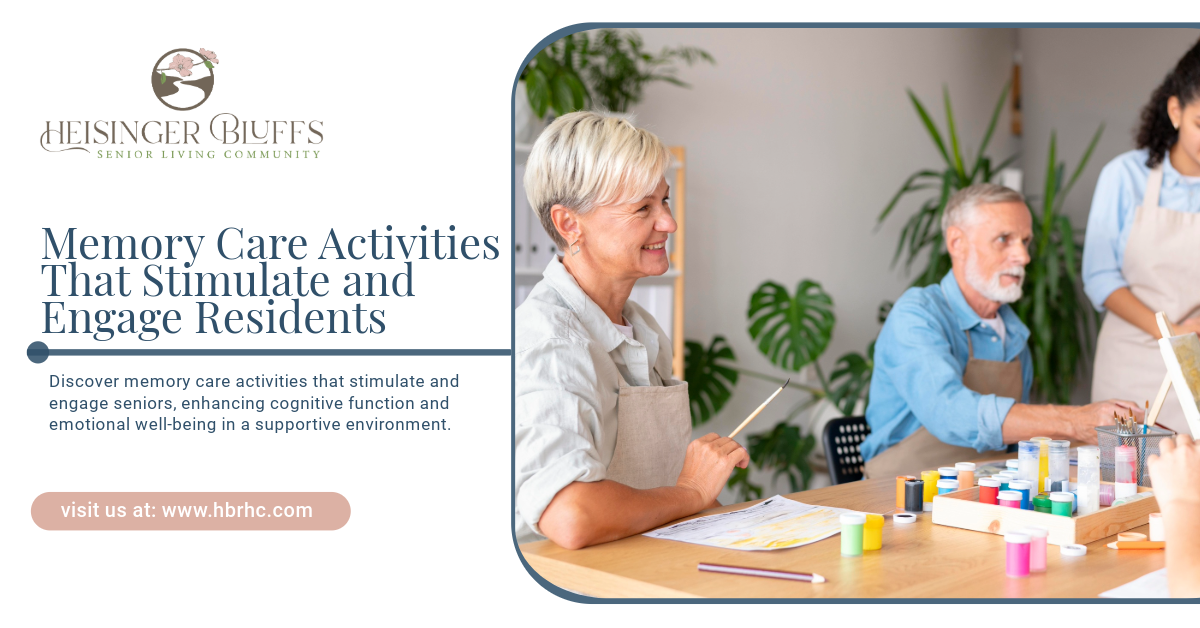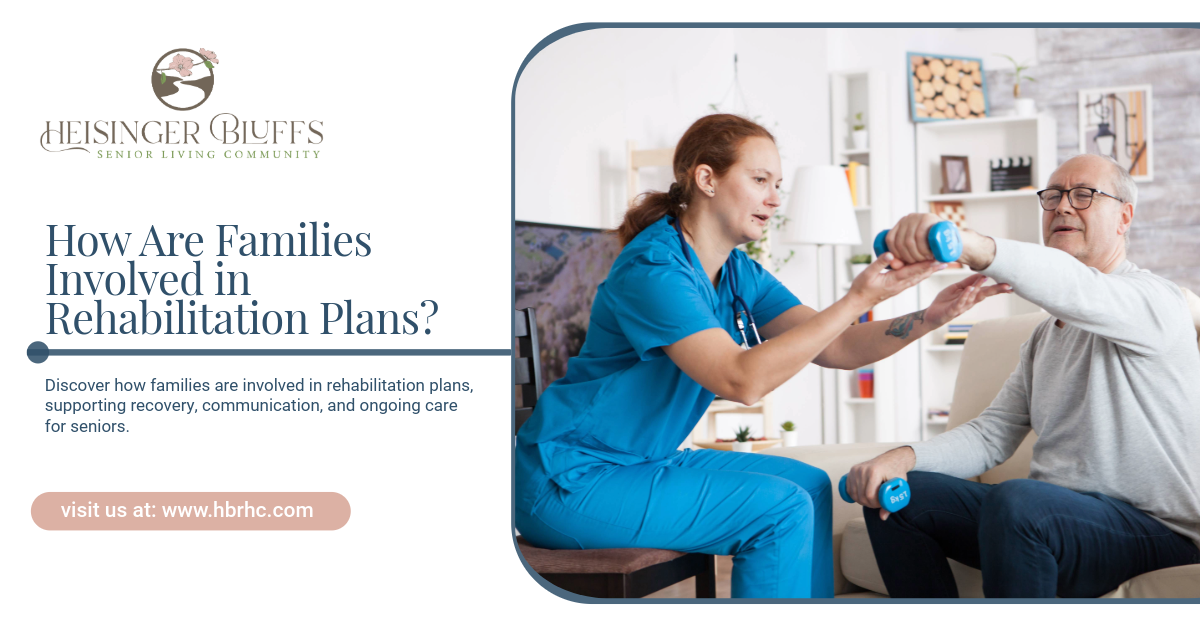Memory Care Activities That Stimulate and Engage Residents

For seniors with Alzheimer’s, dementia, or other memory-related conditions, staying active and engaged is critical for their well-being. Specialized memory care activities help enhance cognitive function, foster emotional connection, and provide a sense of purpose.
This article explores various activities tailored for memory care residents, focusing on their ability to stimulate the mind, engage the senses, and promote overall quality of life.
The Importance of Memory Care Activities
Memory care activities go beyond simple entertainment. They are designed with therapeutic goals in mind, such as improving memory recall, enhancing motor skills, and reducing anxiety.
Key Benefits:
- Encourages cognitive stimulation.
- Boosts emotional health and reduces feelings of isolation.
- Strengthens motor skills and physical coordination.
- Builds a sense of accomplishment and independence.
Top Memory Care Activities to Stimulate and Engage Seniors
1. Reminiscence Therapy
- What It Is: Using photographs, music, or objects from the past to evoke memories.
- Why It Works: This activity taps into long-term memory, which often remains intact longer than short-term memory.
How to Implement:
- Create memory boxes with items from the resident’s younger years.
- Play music from their favorite era.
- Encourage conversations about meaningful milestones, like weddings or career achievements.
2. Music Therapy
- What It Is: Listening to or playing music as a form of therapy.
- Why It Works: Music stimulates multiple areas of the brain, helping with memory recall, emotional regulation, and social connection.
Examples:
- Group sing-alongs.
- Playing instruments like tambourines or drums.
- Creating personalized playlists for each resident.
Pro Tip: Music with a steady rhythm can also help with physical coordination.
3. Art and Craft Activities
- What It Is: Engaging in creative projects like painting, drawing, or crafting.
- Why It Works: Art provides a non-verbal way to express emotions and enhances fine motor skills.
Ideas for Activities:
- Watercolor painting for relaxation.
- Scrapbooking with family photos.
- Seasonal crafts like decorating ornaments or making flower arrangements.
Bonus: Displaying their artwork boosts self-esteem and pride.
4. Sensory Stimulation
- What It Is: Activities that engage the senses—touch, smell, sight, taste, and hearing.
- Why It Works: Sensory activities provide calming effects and improve focus.
Examples:
- Aromatherapy with lavender or citrus scents.
- Touch-based activities like handling soft fabrics or textured objects.
- Tasting sessions featuring different flavors like sweet, salty, or sour.
5. Gardening
- What It Is: Hands-on planting, watering, and tending to plants or flowers.
- Why It Works: Gardening offers physical activity and a sense of accomplishment.
Ideas:
- Creating a small herb garden in pots.
- Flower arranging with fresh blooms.
- Harvesting vegetables or fruits from a communal garden.
Pro Tip: Gardening in raised beds makes it more accessible for residents with mobility issues.
6. Games and Puzzles
- What It Is: Using board games, card games, and puzzles to encourage problem-solving.
- Why It Works: These activities stimulate cognitive function and improve social interaction.
Examples:
- Simple jigsaw puzzles with larger pieces.
- Games like Bingo or dominos.
- Trivia sessions tailored to the resident's interests.
7. Pet Therapy
- What It Is: Interacting with therapy animals, such as dogs, cats, or even birds.
- Why It Works: Animal companionship reduces stress, lowers blood pressure, and provides emotional comfort.
How to Incorporate:
- Regular visits from therapy animals.
- Activities like feeding fish or watching birds in an aviary.
- Caring for low-maintenance pets like rabbits or guinea pigs.
8. Physical Activities
- What It Is: Low-impact exercises tailored to the residents' abilities.
- Why It Works: Physical activity improves mobility, balance, and overall health.
Examples:
- Chair yoga or stretching exercises.
- Walking clubs in a safe, enclosed garden.
- Dancing to upbeat music for fun and exercise.
9. Cooking or Baking Activities
- What It Is: Involving residents in preparing simple dishes or treats.
- Why It Works: Cooking engages the senses and offers a sense of nostalgia.
Ideas:
- Baking cookies or muffins together.
- Preparing no-cook recipes like fruit salads.
- Sharing favorite family recipes with the group.
Safety Tip: Provide close supervision and limit activities to safe, manageable tasks.
10. Spiritual and Mindfulness Activities
- What It Is: Offering opportunities for reflection, prayer, or relaxation.
- Why It Works: Spiritual and mindfulness activities provide emotional comfort and reduce anxiety.
Examples:
- Group prayer or hymn sessions.
- Guided meditation or breathing exercises.
- Reading uplifting stories or poetry aloud.
Creating a Successful Memory Care Program
The success of memory care activities relies on understanding each resident's preferences, abilities, and needs.
Tips for Success:
- Personalization: Tailor activities to individual interests and cognitive levels.
- Consistency: Maintain a structured routine to provide a sense of security.
- Encouragement: Celebrate small successes to boost confidence and participation.
- Staff Training: Ensure caregivers are skilled in guiding and adapting activities.
Final Thoughts
At Heisinger Bluffs, we believe in enriching the lives of our residents through thoughtfully designed memory care activities. Our programs are tailored to stimulate the mind, body, and spirit while creating moments of joy and connection. Contact us today to learn more about our specialized memory care services!
Frequently Asked Questions
What types of activities are best for seniors with advanced dementia?
Seniors with advanced dementia benefit from simple, sensory-focused activities like aromatherapy, soft music, or handling textured objects. These activities provide comfort and engagement without overwhelming them.
How can memory care activities improve a resident's quality of life?
Memory care activities stimulate cognitive and emotional health, reduce anxiety, and provide a sense of accomplishment. They also encourage social interaction, which helps combat feelings of isolation.
Are family members allowed to participate in memory care activities?
Yes, many memory care programs encourage family involvement, as it helps residents feel connected and supported. Family participation can also provide insights into the resident’s preferences and comfort zones.











